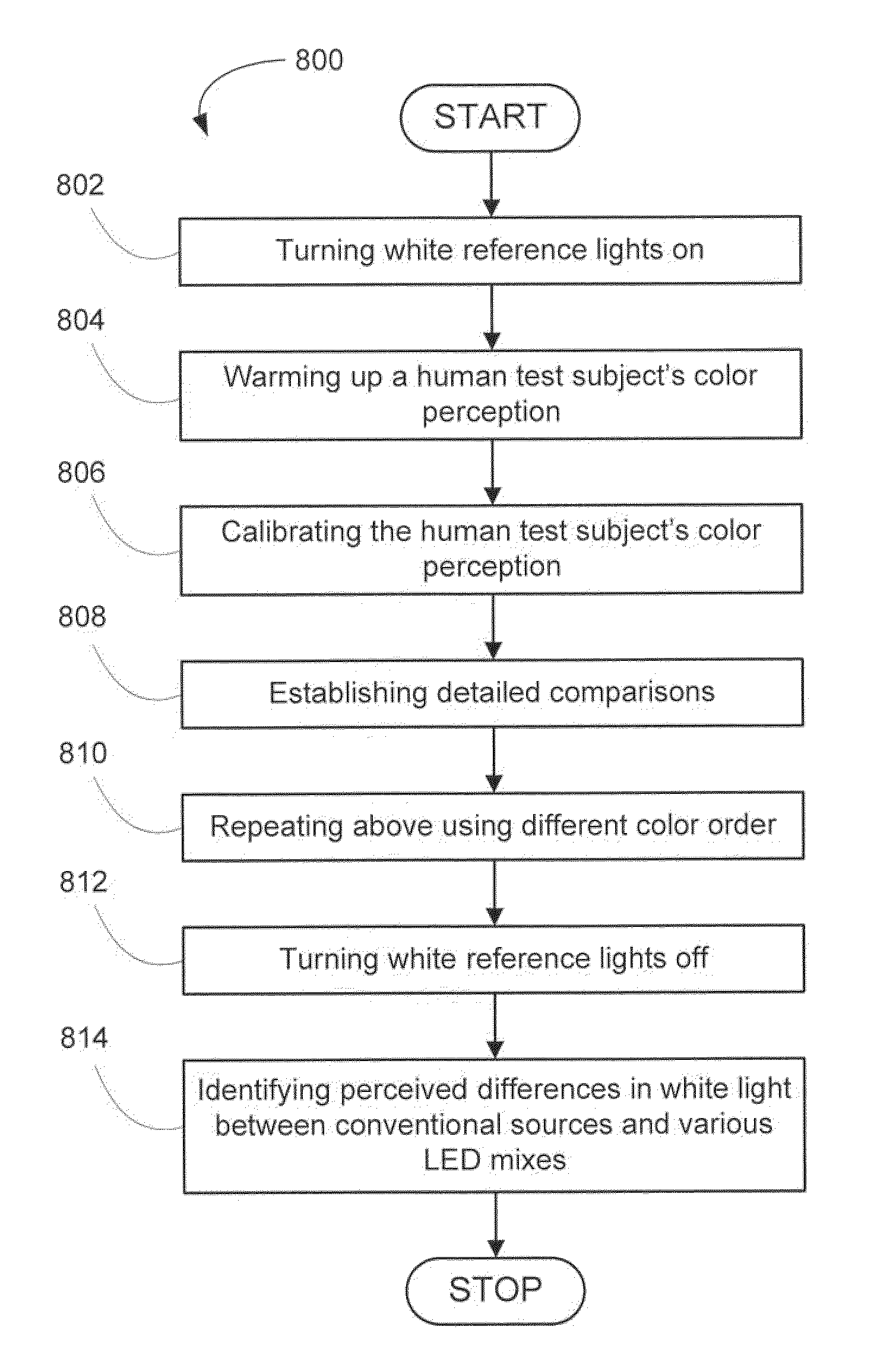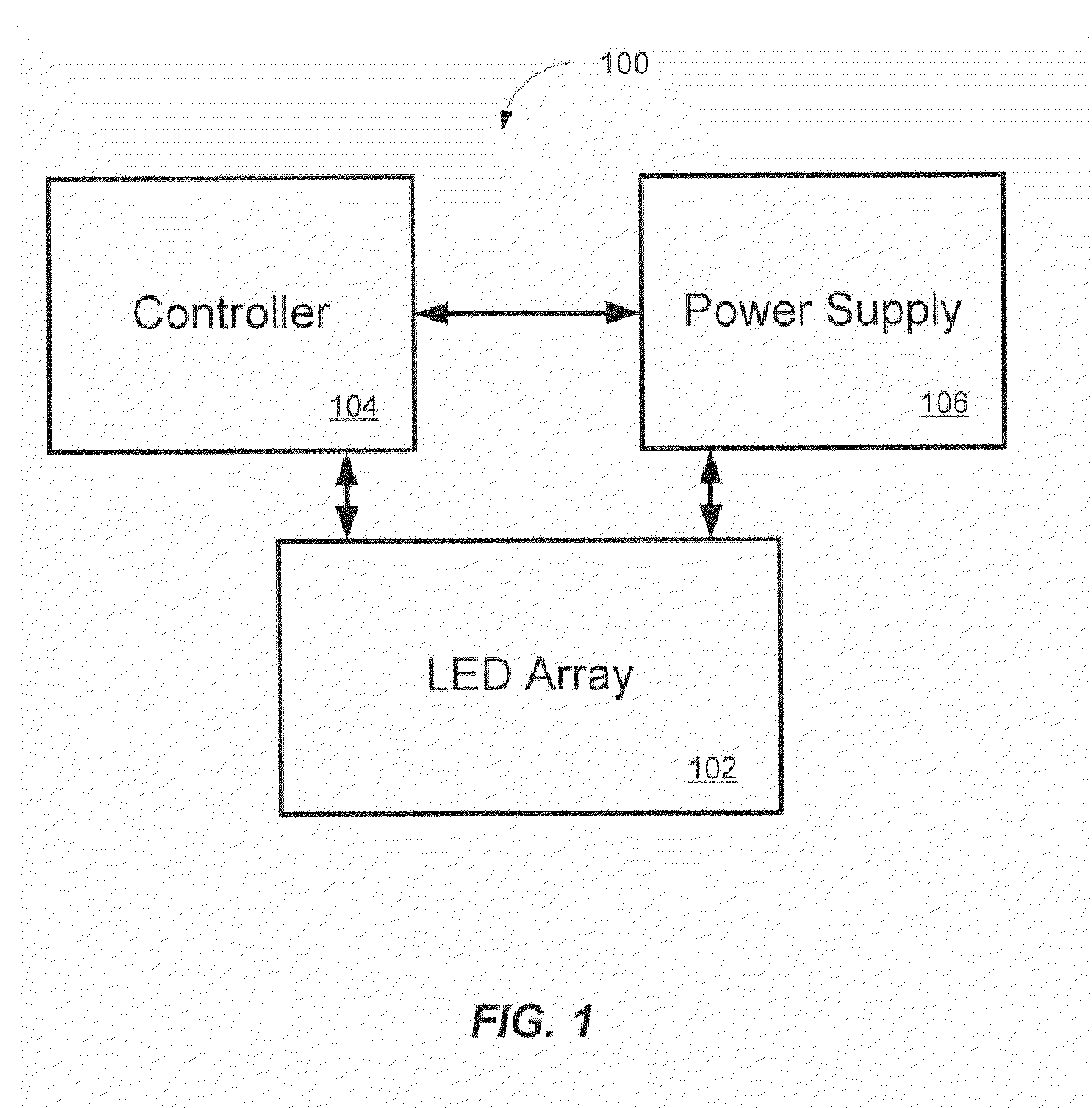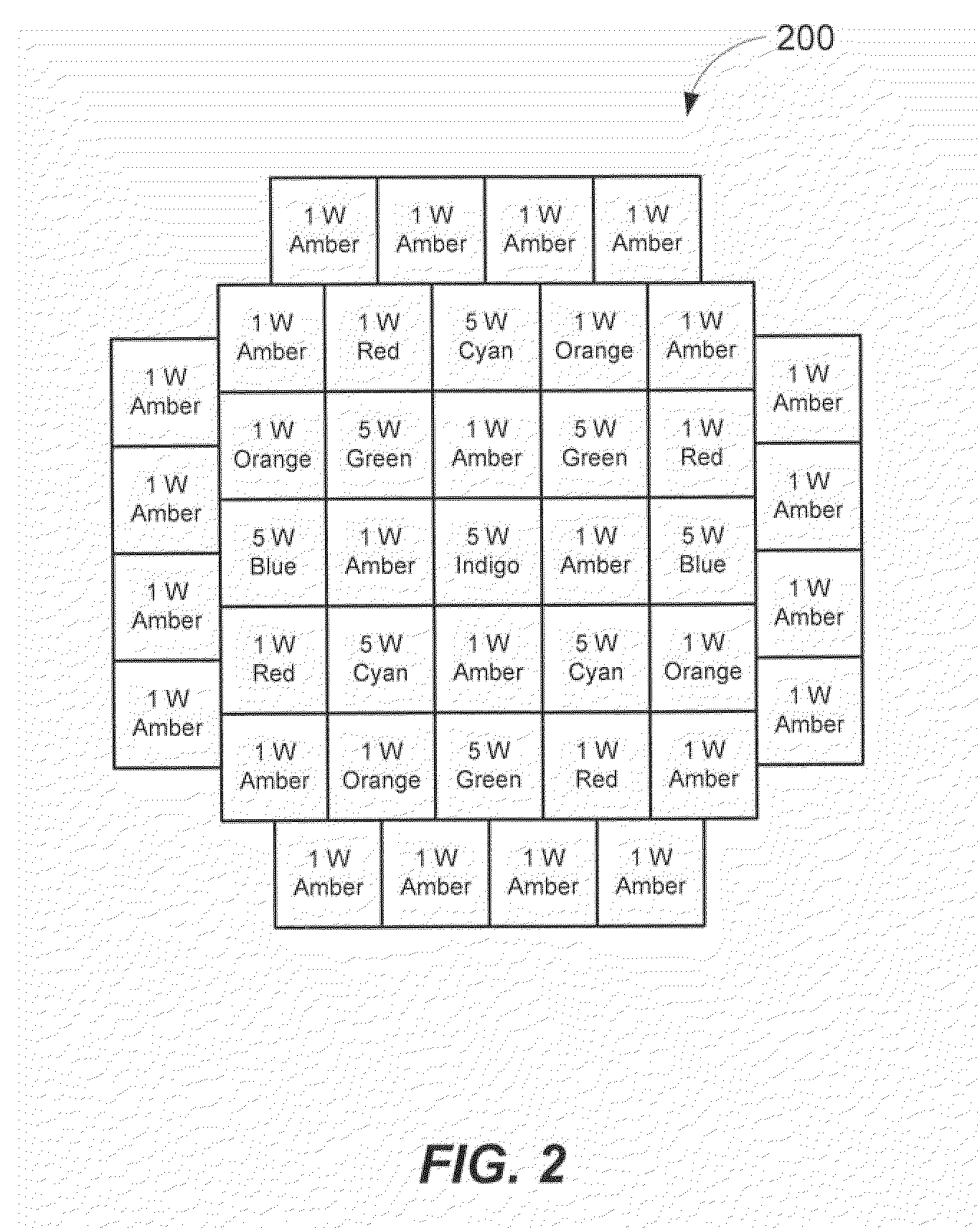Methods, luminaires and systems for matching a composite light spectrum to a target light spectrum
a composite light spectrum and target light spectrum technology, applied in the field of lighting systems, can solve the problems of limited automatic color control range, inaccurate human color perception understanding, and limited understanding of conventional, though limited, and achieve the effect of maximizing the luminous output of the led array
- Summary
- Abstract
- Description
- Claims
- Application Information
AI Technical Summary
Benefits of technology
Problems solved by technology
Method used
Image
Examples
Embodiment Construction
[0047]Methods, luminaires and systems for matching a composite light spectrum to a target light spectrum are disclosed. Method embodiments may be optimized for simultaneously maximizing luminous output with minimal chromaticity error. Method embodiments may further be optimized for simultaneously minimizing both chromaticity and spectral error. Embodiments of the present invention may be used with composite light sources having four or more distinct dominant colors within the visible spectrum. Embodiments of the present invention may include LED arrays, fixtures and systems utilizing LEDs radiating light in four or more different dominant wavelengths within the visible spectrum. Another embodiment of the present invention includes a method for determining human color perception. The LED arrays, fixtures and systems of the present invention may be used in any application requiring lighting ranging from mere illumination to vivid and accurate production of multiple varieties of colore...
PUM
 Login to View More
Login to View More Abstract
Description
Claims
Application Information
 Login to View More
Login to View More - R&D
- Intellectual Property
- Life Sciences
- Materials
- Tech Scout
- Unparalleled Data Quality
- Higher Quality Content
- 60% Fewer Hallucinations
Browse by: Latest US Patents, China's latest patents, Technical Efficacy Thesaurus, Application Domain, Technology Topic, Popular Technical Reports.
© 2025 PatSnap. All rights reserved.Legal|Privacy policy|Modern Slavery Act Transparency Statement|Sitemap|About US| Contact US: help@patsnap.com



